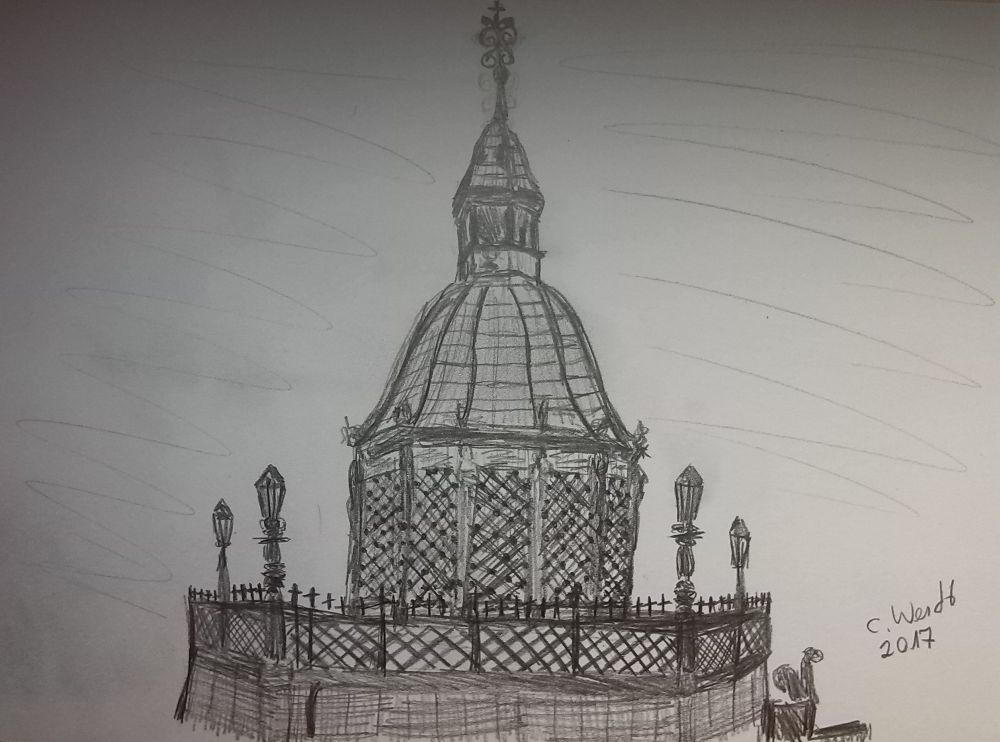How did the Water Art Work?
Construction of the Water Art
The water system consisted of a pumping station, a driving water wheel, an elevated tank and the tube system.
Water was stored in an elevated tank.
The tube system consisted of hollowed-out tree trunks.
By these devices, the water art was able to produce water pressure. Thus, it was possible to supply locations which had a higher position.
The functionality of Water Art?
The water of the Metelsdorfer spring was caught in several „water boxes“. Wooden pipes led the water accordingly. Two wooden pipes with holes of 2 ½ inch diameter load away. The two pipes were not connected, which is why they were called „Mannsrohr“ and „Weibsrohr“. The pipes could be cleaned with 29 „basic drains“. The water crossed the Galgenberg, through the Mecklenburger Tor and reached the Wasserkunst through the Mecklenburger Strasse. From there it was led into the „Wasserkumme“ and mingled with the water from the mill pond (Mühlenteich).
5 lines lead from the water art to the city. The contact points were Mecklenburger Strasse, Dankwartstraße and Fürstenhof, Krämer- and Bohrstraße, Lübsche Straße, Altwismar- and Bademutterstraße.
In addition, additional pipelines provided houses for the city.
Side streets had no water supply.
The inhabitants of the side streets got their water from „Freipfosten“, which were distributed in the city, free of charge. These included „Adam and Eve“ („Nix and Mermaid“) in water art. They left water by means of heel pressure.
Who had water connection, paid water money, which was appreciated by the Taxkommission.
For brewers, brandy burners and malters it was a considerable cost factor.
Originally posted 2017-07-14 10:04:57.

2 Replys to “How did the Water Art Work?”